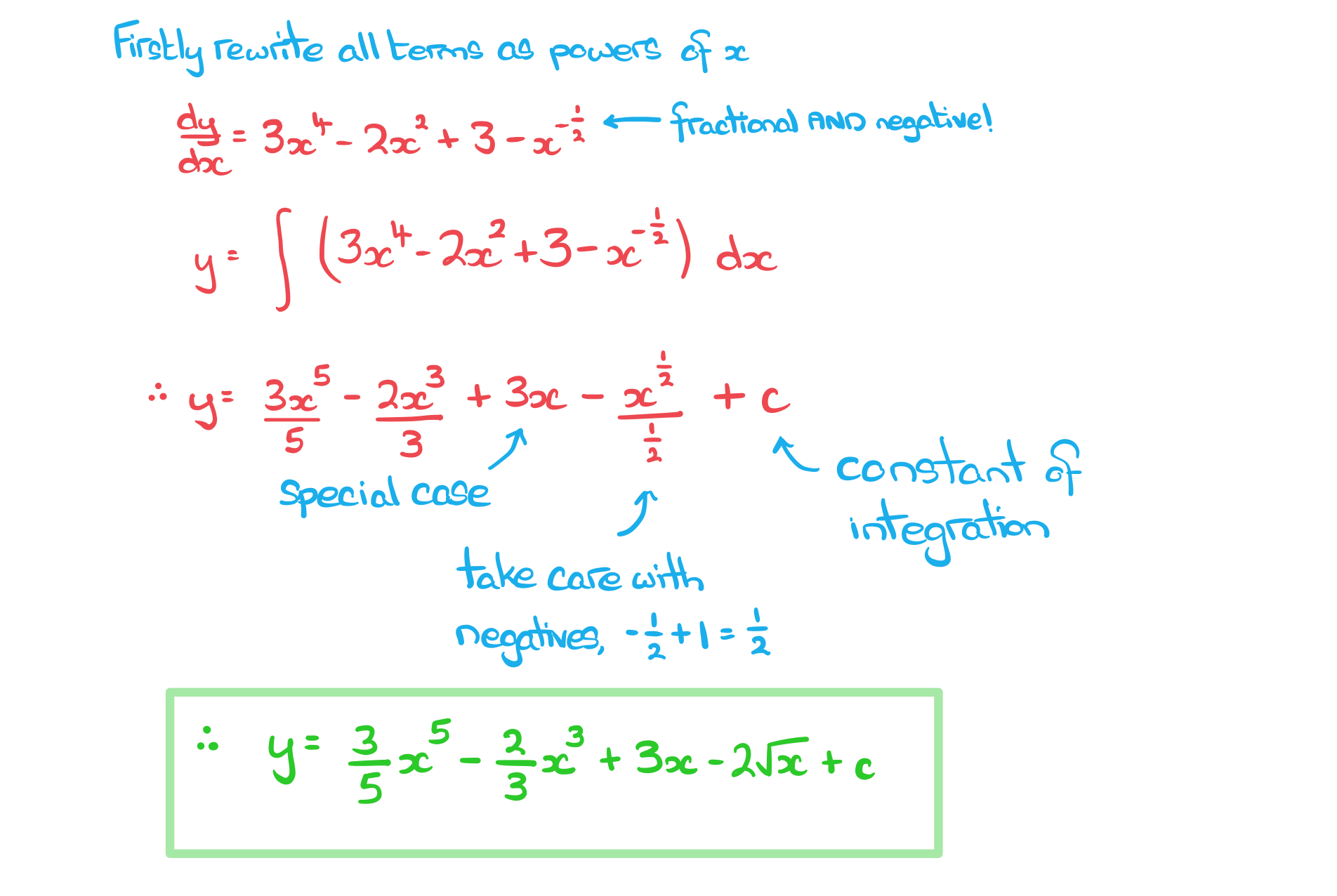Did this video help you?
Introduction to Integration (DP IB Maths: AA HL): Revision Note
Introduction to Integration
What is integration?
- Integration is the opposite to differentiation
- Integration is referred to as antidifferentiation
- The result of integration is referred to as the antiderivative
- Integration is the process of finding the expression of a function (antiderivative) from an expression of the derivative (gradient function)
What is the notation for integration?
- An integral is normally written in the form
-
- the large operator
means “integrate”
- “
” indicates which variable to integrate with respect to
is the function to be integrated (sometimes called the integrand)
- the large operator
- The antiderivative is sometimes denoted by
- there’s then no need to keep writing the whole integral; refer to it as
- there’s then no need to keep writing the whole integral; refer to it as
may also be called the indefinite integral of
What is the constant of integration?
- Recall one of the special cases from Differentiating Powers of x
- If
then
- If
- This means that integrating 0 will produce a constant term in the antiderivative
- a zero term wouldn’t be written as part of a function
- every function, when integrated, potentially has a constant term
- This is called the constant of integration and is usually denoted by the letter
- it is often referred to as “plus
”
- it is often referred to as “plus
- Without more information it is impossible to deduce the value of this constant
- there are endless antiderivatives,
, for a function
- there are endless antiderivatives,
Did this video help you?
Integrating Powers of x
How do I integrate powers of x?
- Powers of
are integrated according to the following formulae:
- If
then
where
and
is the constant of integration
- If
-
- This is given in the formula booklet
- If the power of
is multiplied by a constant then the integral is also multiplied by that constant
- If
then
where
and
is a constant and
is the constant of integration
- If
notation can still be used with integration
- Note that the formulae above do not apply when
as this would lead to division by zero
- Remember the special case:
- e.g.
- e.g.
- This allows constant terms to be integrated
- Functions involving roots will need to be rewritten as fractional powers of
first
- eg. If
then rewrite as
and integrate
- eg. If
- Functions involving fractions with denominators in terms of
will need to be rewritten as negative powers of
first
- e.g. If
then rewrite as
and integrate
- e.g. If
- The formulae for integrating powers of
apply to all rational numbers so it is possible to integrate any expression that is a sum or difference of powers of
- e.g. If
then
- e.g. If
- Products and quotients cannot be integrated this way so would need expanding/simplifying first
- e.g. If
then
- e.g. If
What might I be asked to do once I’ve found the anti-derivative (integrated)?
- With more information the constant of integration,
, can be found
- The area under a curve can be found using integration
Examiner Tip
- You can speed up the process of integration in the exam by committing the pattern of basic integration to memory
- In general you can think of it as 'raising the power by one and dividing by the new power'
- Practice this lots before your exam so that it comes quickly and naturally when doing more complicated integration questions
Worked example
Given that
find an expression for in terms of
.


You've read 0 of your 5 free revision notes this week
Sign up now. It’s free!
Did this page help you?
